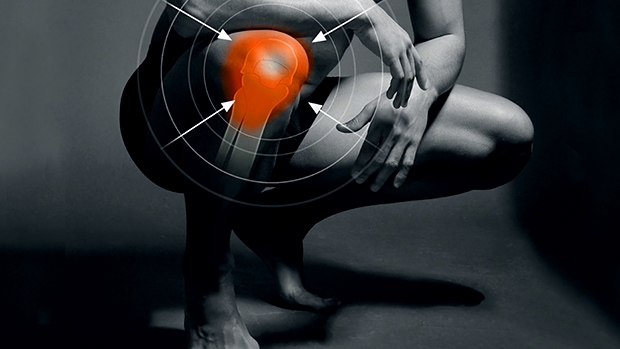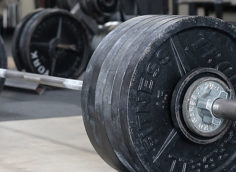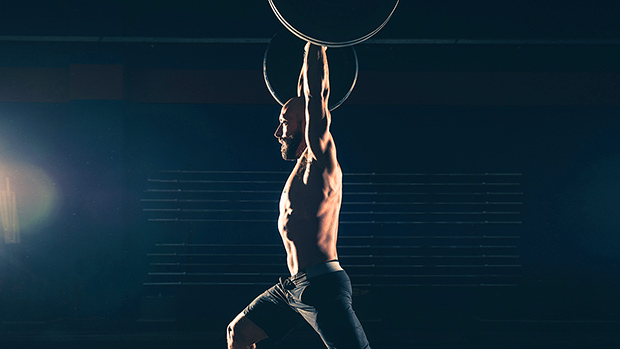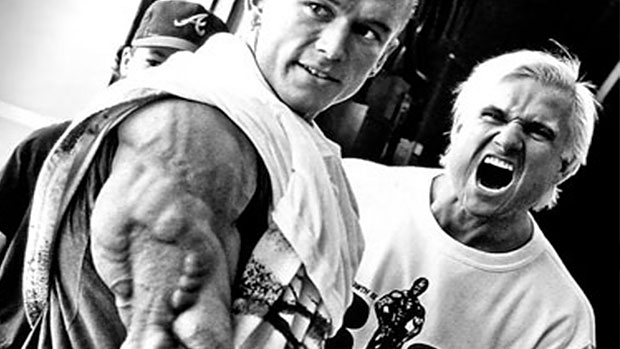Every exercise is potentially injurious.
There isn't a single major exercise in the strength training world that can't be contraindicated, if you look deep enough.
Take the palms-forward lat pulldown, for example. The potential exists for rotator cuff impingement. Does this mean that in ten years, by performing lat pulldowns, I won`t be able to raise my arms above my head without interminable agony?
Well, at least I'll have me a beastly back. I can just pay some lat-less geek to change my light bulbs for me.
Truth is, it comes down to simple cost versus benefit. At some point you have to accept movements for what they are, warts and all, and make an (informed) decision as to whether incorporating them into your program would do you more harm than good.
First, get the natural versus unnatural thing out of your head. Lifting heavy objects over and over isn't something our bodies were "made" to do. Weight training places additional load on the body – an unnatural stress we're deliberately throwing upon ourselves in pursuit of more muscle and increased strength.
The harsh reality is that all the ambitious wannabe meatheads trying to push more than their muscles, connective tissue, and bones can handle will eventually pay an injury price – and then go pay their practitioner for good measure.
Even the genetic wonderkids who pull 600 off the floor or push 405 off their chest with ease aren't immune, whether it's an acute muscle or joint injury waiting to happen or even just a simple but frustrating lifting plateau.
On a positive note, it's possible to stay one step ahead of the curve and correct issues that may lead to injuries if left unattended. Let's look at some exercises to do to avoid knee problems.
I love it when a client comes to me saying they don`t do certain exercises because they have "bad knees," yet they run 10K a day on their treadmill and enter a half-marathon every spring. It goes beyond simple tendonitis; depending on the site of the pain, you could have one of about million issues. Here are the most common.
1 Your Screw Home Mechanism won`t Screw Home
Get your minds out of the gutter. When this mechanism is deficient, other muscles start taking over. We`ve all heard that one before, but in this case it's even more crucial because ligament stress becomes a factor.
What is the screw home mechanism?
The screw home mechanism helps the knee fully extend. In short, there are two bones in the lower leg and one bone in the upper leg. In order for the bones to sit where they should – fixed with the femur properly placed on top of the tibia in a full extension when standing – a very small rotation has to occur among the femur, tibia, and fibula. Involved in this rotation are the ACL and the popliteus muscle (a small muscle behind the knee).
If this mechanism is faulty, one of two things will happen:
- The IT Band is forced to enter and assist in the movement (not good).
- The screw-home doesn't happen at all, resulting in compression of cartilage bodies within the knee, along with ACL stress (even worse!)
Throw heavy weightlifting into the mix and soon you're picking up next month's lease payment on your orthoscopic surgeon's BMW.
The fix?
First, ensure the tissue quality of the IT band is up to par. Think aggressive foam rolling. A special area to focus on is just above knee level, a common tight spot.
VMO activation exercises are also worth mentioning. The VMO is involved in the last few degrees of leg extension, meaning if it's not activating, chances are your screw home ain`t screwing.
2 Your Knees are Getting Owned by Shearing Force
Shearing on a knee joint happens upon contraction of the quadriceps from various positions. The patella gets pulled on, causing the kneecap to move away from the tibia due to the femur shifting backwards and the tibia shifting forward.
This places loads of stress on the ACL, and as the French say, sucks big ballage. It often goes unnoticed by lifters, so here's a loving tip.

Quick note: I'm not completely outlawing the leg extension to people who have healthy knees and no history of pain or injury. If you're healthy and on top of your lifting game, hit up the leg extension from time to time for a great hit to the rectus femoris.
The mechanics that the standard leg extension machine enforces epitomizes the definition of shearing force, especially if reps are started deep into knee flexion. It's an isolation exercise where the only muscle group contributing to the action is the quadriceps. If you`re a guy with knee issues, it's the last thing you want to do.
A crucial thing to consider is the difference between open and closed chain leg exercises. Open chain exercises allow the foot to move freely, and usually isolate one muscle group at a time for a single contraction. Closed chain exercises usually involve compound movements with feet starting and finishing in the same place.
The reason why I incorporate squats, lunges, and their variations in my knee clients` programmes is because these exercises immediately involve a co-contraction of the hamstrings, quads, and muscles of the lower leg. This co-contraction helps stabilize the knee from shifting forward or backward. If your knees are already ass backwards, the following exercise builds them back.
This exercise has so many benefits that it`s outlawed in all forty-nine states as well as the Birthers' Republic of Hawaii.
First, it allows the musculature surrounding the knee to be trained effectively without as much knee joint stress, due to the elevated foot position.
Second, it trains the hamstrings and glutes to achieve the eccentric flexibility necessary to assume a proper and desirable squat bottom position.
Start by using a higher box, and focus on pressing through the ball of the foot and maintaining tension on the quads through the entire range of motion (even close to the end of the rep).
High box, dumbbell as load, basic version
Before adding weight, look to lower the height of the box and repeat the exercise. Do sets of between 12 and 15 reps.
The slanted box version shown below takes further pressure off the knee capsule, so if you`re at a bad starting point, this may be where you want to start. Your bum knees will become bionic in no time.
Angled box, modified version for bad knees
Low box, cable attachment for contralateral load, most advanced version
- Choose a back squat over a front squat. The hamstrings are in a more taut position with the bar loaded on the back of the body, thus encouraging their activation.
- Stop running on a treadmill. You're already having VMO issues, your IT bands are like ropes, your knees are under shearing forces due to your crappy workouts, and you want to put repeated impact on them while running on a moving belt that forces only anterior chain activation?
Do yourself a favour and ditch the treadmill – and running altogether – until your poor knees learn how to support their own weight.
It's true, every exercise can hurt you in the weight room; squats, bench presses, pulldowns, and texting on a treadmill included. But some movements are better than others, and it's a trade-off that's definitely worth investigating.
Before learning cool and new exercises, it's vital to first learn about your own body and how doing certain exercises could affect it. The knees are just one example where a little time spent taking care of business can lead to a huge "jump" in your performance.





